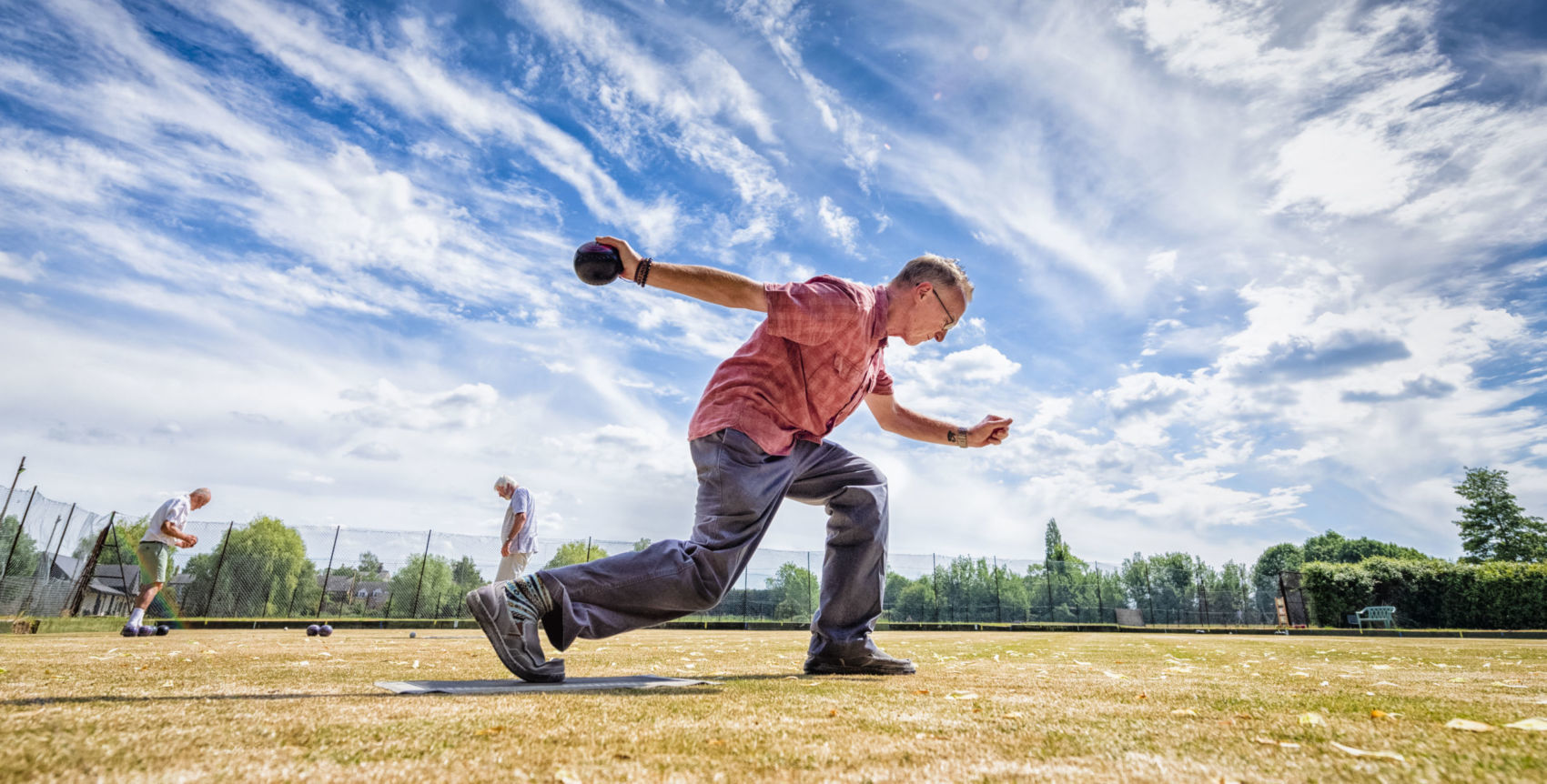If you haven’t been able to find the answer on any of our other Play Bowls pages, you may find it below…
The curved path taken by the bowl is always towards the side with the smaller disc, but this only happens when the bowl begins to slow down.
The point at which the bowl begins to turn is known as the ‘shoulder’ and this will vary according to the distance, or length, that the jack is from the mat. A simple guide is that the shoulder is roughly two thirds of the distance the bowl has to run to arrive at its objective.
In competitive games of pairs, triples and fours, an ‘extra end’ is played if the scores are level after the allotted number of ends have been completed.
Positions
The green is divided into sections called ‘rinks’ which should be between a minimum of 4.3 metres and a maximum of 5.8 metres wide for outdoor play.
Surrounding the green is a ditch, and a bank where markers indicate the boundaries and centre lines of each rink.
Each game is split into individual ends. At the start of each end one player will place the mat on the centre line of the rink and deliver the jack. The jack is then put on the centre line at the other end of the rink. The jack must be a minimum of 23 metres from the mat at the start of the end.
